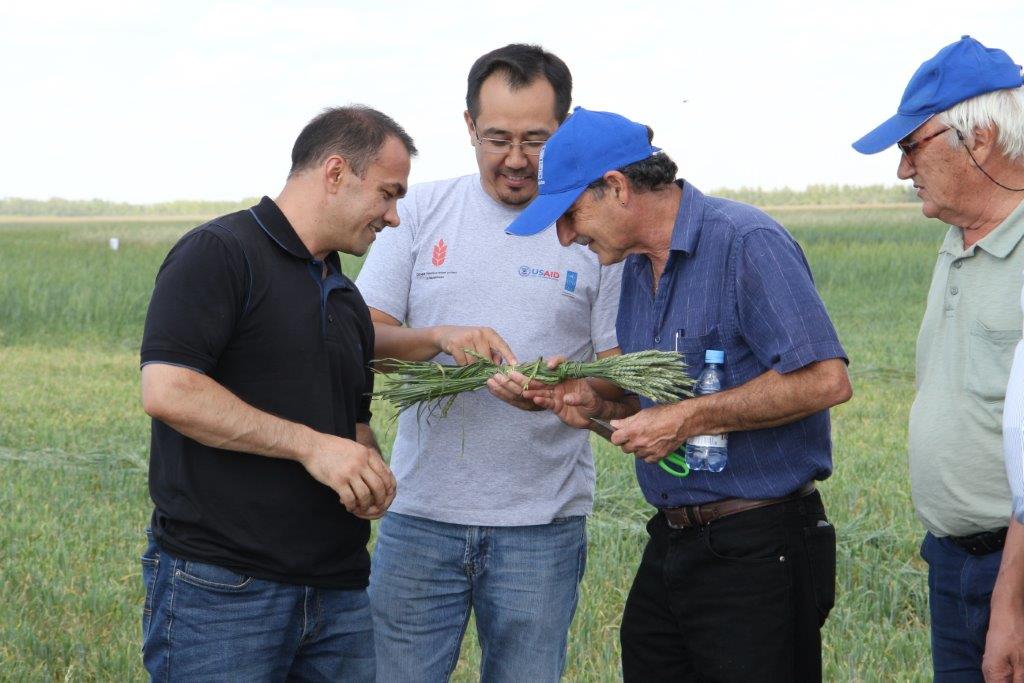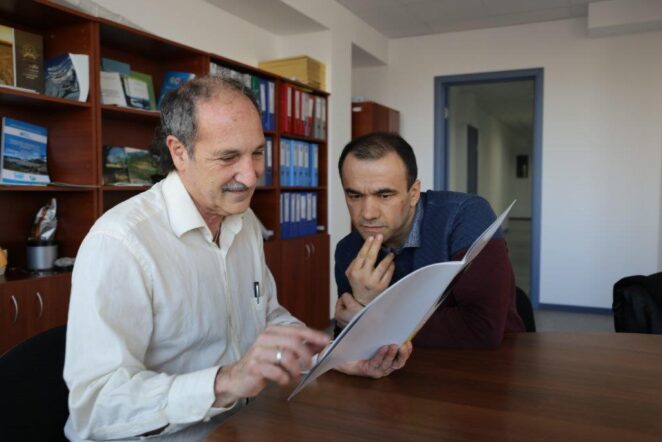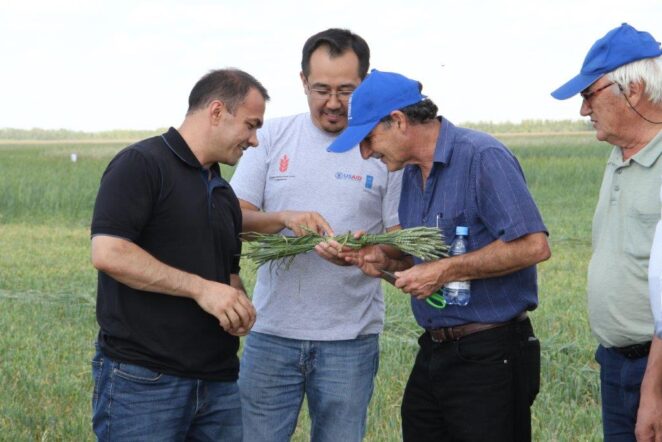Improving wheat productivity in Kazakhstan through the identification of best sowing intervals

Introduction
A sufficient level of soil moisture is one of the main factors affecting wheat productivity, especially in the arid and semi-arid lands of Kazakhstan. Kazakhstan has nine agricultural zones, each with a slightly different climate and soil. Until now wheat throughout Kazakhstan has been sown around the period from 15th to 25th of May, irrespective of the zone or climate. However, accurately measured and well-timed sowing, when soil moisture and temperature have reached optimal levels, increases seed survival, enhancing crop growth and yield. Sowing outside of these optimal conditions can result in up to 50% loss in harvest.
The joint UNDP-USAID Project “Improving the Climate Resilience of Kazakhstan Wheat and Central Asian Food Security” aims to increase wheat productivity in Kazakhstan. The project has developed a special method to accurately determine, in various regions of Kazakhstan, the best time for seeding wheat, based on factors such as soil moisture and air temperature.

Methods and Tools
It is critical for securing a high level of seed survival to have the most appropriate balance between warmth and soil moisture. Sowing wheat seed when maximum soil moisture is available and temperature is high, but not so high that significant moisture is lost through evapotranspiration, enables the seeds to grow faster and stronger. This increases the seed’s immunity to different diseases, weeds and pests, and increases its resilience to extreme weather conditions, thereby supporting a good yield.
The method that is being developed under the joint USAID-UNDP project allows the assessment, based on both satellite and ground-based meteorological data, of the current level and availability of soil moisture and the interrelation of these data with values of selected soil samples. Satellite imagery data, provided by National Space Research Institute and Technology, are used to identify the maximum level of soil moisture. The temperature, favorable for good seed growth, should be about +10-15ºC, and is tracked using regional temperature and precipitation data, provided by Kazhydromet National Hydrometeorological Agency.
Learning by doing:The method has been widely applied within the demonstration plots run by the USAID/UNDP Climate Resilient Wheat project in three northern Kazakhstan regions to illustrate its impact on crop yield. This was performed in conjunction wtih the Grain Research institute of the Kazakhstan Ministry of Agriculture, who provided experts to test the methodology in cooperation with farmers. The farmers’ capacity to use the technique was developed through the principle of learning-by-doing. From the initiation of the project, a central principle has been that all hands-on fieldwork is carried out by farmers under the general supervision and guidance by experts.
Out-scaling this innovative approach: The information on how to select the best time-frame for sowing wheat seed has been distributed to farmers through different events organized within the project. For example, Central Asian “Field Day” campaigns are run, where the experts and farmers get together and discuss different agricultural technologies, methods, approaches and innovations through a face-to-face agricultural fair. The project also conducted a number of trainings, seminars and workshops to convey the available information to farmers.

Outcomes and Impacts
The method that is being developed by the project is a very important way for both enhancing and improving the forecasts of wheat productivity. This approach helps determine the best timeframe for sowing seeds in each region of Kazakhstan, thereby enhancing productivity nationally.
The project has been testing this methodology for the last four years, in conjunction with the Grain Research Institute of the Ministry of Agriculture of the Republic of Kazakhstan. According to expert reports, the plots where the method has been applied have seen an average of 20% higher yields compared to those before the method was employed.
During the year of 2013-2014, the advantage of using this methodology was particularly well illustrated. There was an early autumn frost and according to official statistics more than 28% of the wheat yields were left under the snow due to fact that the wheat had been sown late and had not matured sufficiently for harvest before the early frosts. However, those farmers who had also sown their wheat seed late, but following the methods given by the project in terms of availability of maximum soil moisture and temperature, did not suffer crop loss as they were able harvest the wheat well before the early frosts started.
As temperatures increase under climate change and the seasonal patterns shift, so the use of this method may become increasingly beneficial to the farmers of Kazakhstan to increase their yields.

Related resources
- Read more about the USAID-UNDP project "Improving the Climate Resilience of Kazakhstan Wheat and Central Asian Food Security"
- Watch the USAID-UNDP video 'World of Wheat'
- About the project to improve the productivity of wheat in Kazakhstan [in Russian]
- О проекте по повышению урожайности пшеницы в Казахстане
- UNDP news: Minister of Agriculture presented a seminar about joint UNDP agriculture projects
(0) Comments
There is no content